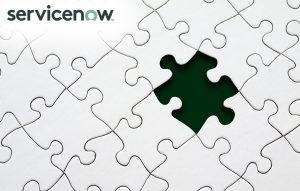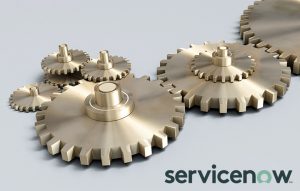Today, organizations face continuous challenges when it comes to meeting the growing needs of business and IT requirements. Organizations, nowadays, are struggling with outdated IT Service Management (ITSM) suites. These legacy systems are difficult to update and even fail to deliver expected outcomes.
In fact, many companies are struggling to make the right choice between holding on to a legacy system and installing a next-generation ITSM tool such as ServiceNow that will enable them to move forward effectively. The costs involved, fear of downtime and employee buy-in are some of the factors that make companies wary of switching to a new system.
This blog post will examine ServiceNow as the next-generation ITSM tool and its contributions towards optimizing IT and business requirements and in contrast, the risks of staying with legacy ITSM models.
What is a legacy ITSM?
Legacy ITSM refers to those systems that fail an organization because of their inability to keep up with the changing business and technology needs. So, how do you know if your system needs modernization? Here is a short checklist that can help you identify a legacy ITSM:
1. System lacks speed and fails to perform as expected
2. The system is no longer supported by the vendor
3. The system is device-dependent and stands in the need of extended mobile capabilities
4. Your system is incompatible with other modern software systems
5. It is difficult or impossible to add new functions to your system
6. Your system is facing security threats
7. Your operation, support and maintenance costs are getting higher
If your ITSM suite indicates these signs, you are probably using a legacy system that will fail you in the long run because of its incapability to liaise with the demanding needs of businesses and IT environments. This gives you a strong reason to migrate from an older ITSM system to a next-generation ITSM that carries out most of your operations more effectively.
The risk of staying with legacy ITSM
IT departments that stay with a legacy ITSM tool face the following threats:
- Losing credibility with lines of business (LOBs) by failing to support the overall business objectives
- Lack of business processes and governance responsibilities towards business operations
- Less likely to adopt cloud as a resource for expanding ITSM and appearing as ineffective when it comes to managing ITSM for cloud as an environment
- Less likely to invest in strategic ITSM requirements such as integrated operations, shared analytics, advanced automation, configuration management databases (CMDBs), application discovery and dependency mapping (ADDM), service catalogs, and IT Infrastructure Library (ITIL).
Benefits of migrating to a next-generation ITSM
When you migrate legacy ITSM system to ServiceNow, you can engage more effectively with your end users, automate business processes in a timely manner, and dramatically reduce costs of operations. Moreover, you will be able to tackle new challenges and deliver increased business value, as well as secure your business knowledge and use it for innovation.
Next-generation ITSM systems have built-in IT Infrastructure Library (ITIL) processes that help in optimizing your existing workflows. Adopting a new ITSM platform is not difficult, as they are designed with easy implementation settings, and have extended flexibility that seamlessly adapt to your specific business needs.
ServiceNow as a next-generation ITSM system
Today’s enterprises need a robust ITSM system to support various business processes and ServiceNow is one of the leading platforms that is becoming popular as a next-generation ITSM suite. ServiceNow keeps operations simple, consistent, and repeatable since the platform is used for configuration rather than for customization and coding. It provides clear visibility when it comes to complex business systems spread over multiple locations.
Here are some of the attributes that make ServiceNow a next-generation ITSM suite:
- ServiceNow has built-in ITIL standards so there is no need to recreate it, and thus, helps companies to accelerate best services with less monitoring of operations.
- ServiceNow’s software-as-a-service (SaaS) solution model enables companies to reduce operational costs significantly.
- Performance tracking – your IT teams can evaluate the improvement areas and streamline various processes.
- Automate and support several processes in incident management, change management, enterprise services, and other areas.
- Gain improved visibility into services’ performance and availability, making it easy to identify the root cause of issues and automating the fixes more consistently.
- ServiceNow ITSM can provide clear visibility of your business processes and IT environment using a single system.
- It consolidates the necessary tools and systems, while machine learning automates processes on the powerful Now Platform.
- ServiceNow ITSM defines the structure and automates the workflow, by combining the processes of every department in the enterprise such as IT, human resources, field service and more.
The best time to adopt a next-generation ITSM
A proper assessment of your existing system’s technical capabilities, organizational factors and overall internal capabilities will give you a clear picture on whether you need to move to a next-generation ITSM framework or not. If you wish to know more about how ServiceNow ITSM can help you transform your operations, talk to our ServiceNow consultants.









